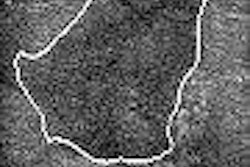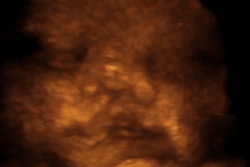Vigilance and a high degree of suspicion are needed to avoid missing breast cancers with atypical features, according to Dr. Dona Hills of Queens-Long Island Medical Group in North Babylon, NY.
"(Missed) ultrasound BI-RADS 1-3 breast cancers did not have the typical suspicious characteristics you would be looking for," Hills said. She spoke during a presentation at the 2005 American Institute of Ultrasound in Medicine (AIUM) annual convention in Orlando.
Hills performed a retrospective review of breast cancer patients whose ultrasound findings were normal, benign, or probably benign (BI-RADS categories 1-3) to determine if there were any common features in these difficult-to-diagnose cancers. A database review found 246 breast cancers diagnosed by ultrasound-guided biopsy and confirmed at surgery between 1993 and 2001, 41 of which were categorized as BI-RADS category 3 or less (including one normal finding and 23 BI-RADS category 2).
Fifteen of the cancers were detected by mammography, while 13 had a negative mammogram and 10 had a benign or probably benign mammogram. Patients were divided into three groups: those who had benign mammography, positive mammography, and negative mammography.
Various characteristics of the breast cancer patients with ultrasound BI-RADS 1-3 findings were evaluated.
In all three groups, the majority of the patients were referred to ultrasound with nonpalpable masses. Of the 38 patients with benign-appearing ultrasound examinations, 40% had suspicious mammograms, 26% had benign mammograms, and 34% had negative mammograms, she said.
Hills found no significant difference among the three groups in the type and size of breast cancer, density of breast tissue, sonographic characteristics of shadowing, fat compression, shape, enhancement, and personal history of breast cancer.
The ultrasound characteristics seen were not those usually associated with breast cancer, Hills said. For example, the lesions had no shadowing, had little or no fat compression, were mostly round or oval, and were mostly isoechoic rather than hypoechoic, and microlobulations were not seen, she said. Most of the cancers were less than 1 cm.
Cancers were assigned into five categories, including one patient with invisible or poorly visualized cancer, 14 with benign appearing cancers, four with complex/complicated cysts in a busy breast, and 12 with small cancers (less than 4 mm). Thirteen patients were considered to be underestimated in their category.
Hills noted that the missed ultrasound BI-RADS 1-3 exams did not have the typical suspicious characteristics for cancer. Sonographic suspicious findings for a complicated cyst include internal vascularity, incomplete capsule, duct extension, fibrovascular stalk, thick septations, an echogenic thick halo, mural nodules, and eccentric wall thickening, she said.
Hills recommends that ultrasound be performed when stable nodules or asymmetric densities are shown on mammography. Ultrasound should also be compared with the prior ultrasound exam.
"Beware of the breast with multiple nodules and cysts -- they are complicated," she said. "Spend the time."
In addition, she recommends that complicated cysts be aspirated and biopsied. Also, use the strict criteria for BI-RADS 3, Hills said.
"If just one suspicious feature is found, (then the patient) doesn't belong in that category," she said.
Also, know and teach all the tricks and techniques you've learned, such as compressing, using color, multiple views, and magnifying, she said.
"And if the pathology doesn't match, repeat the biopsy," she said.
By Erik L. Ridley
AuntMinnie.com staff writer
September 23, 2005
Related Reading
Before breast screening, women want the lowdown on logistics, callbacks, June 27, 2005
Ultrasound helps find occult breast cancer postsurgery, May 4, 2005
Hormonal variations can affect breast vascularity, US reveals, January 13, 2005
Tumor type, breast profile determine value of mammo, US, and MR, January 6, 2005
Breast US readers need more practice with postop changes, December 22, 2004
Copyright © 2005 AuntMinnie.com




















